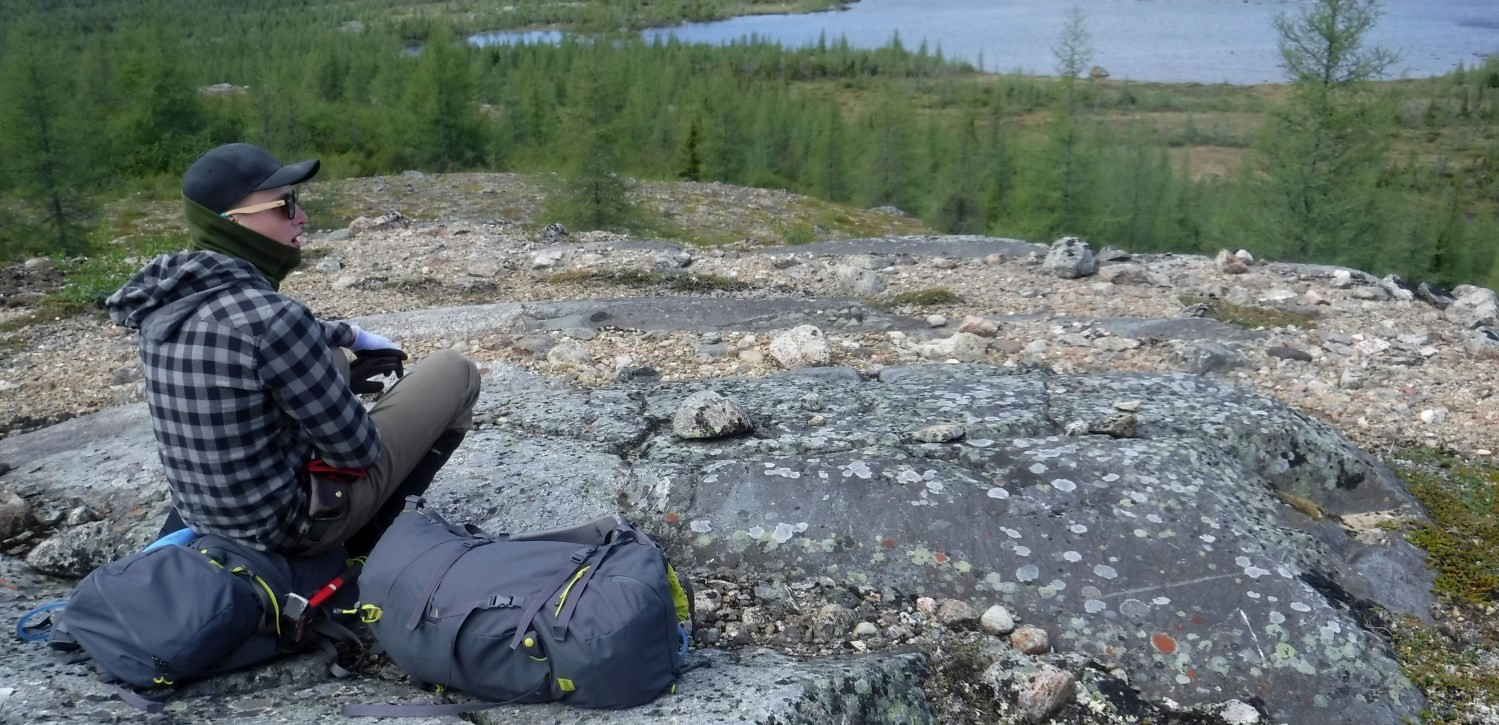
| Author: | Lafrance et al., 2016 |
| Age: | Mesoproterozoic |
| Stratotype: | None |
| Type area: | Brisson Lake area (NTS sheet 24A) |
| Geological province: | Churchill Province |
| Geological subdivision: | Rachel-Laporte, George, Mistinibi-Raude and Falcoz lithotectonic domains |
| Lithology: | Subophitic gabbro |
| Category: | Lithodemic |
| Rank: | Suite |
| Status: | Formal |
| Use: | Active |
None
Background
The Slippery Dykes were introduced in the Jeannin Lake area (Lafrance et al., 2016) to group subophitic dykes associated with magnetic and topographic lineaments oriented E-W to ENE-WSW in the Southeastern Churchill Province (SECP).
Description
The Slippery Dykes consist of subophitic olivine gabbro, magnetic, massive, medium-grained, grey in fresh exposure and brownish in alteration patina. Only one sample was collected in 2014 for analysis and petrography. The rock is composed of plagioclase laths moderately sericitized, olivine (20-25%), clinopyroxene (10-15%) and opaque minerals (5%). There are also some dark brown biotite, chlorite, apatite and sulphides.
Thickness and distribution
The delineation of the six dykes assigned to the Slippery Dykes was primarily interpreted from the magnetic survey. However, decametre to hectometre-wide dykes were observed at a few locations along these large lineaments. The presence of other E-W lineaments, mainly in the southern part of the SECP, suggests that several other dykes that were not observed during regional mapping may be present. Magnetic lineaments are generally a few hundred metres wide and can be traced over long distances, up to >25 km long. The Slippery Dykes were observed in the George (2 dykes; Charette et al., 2018), Rachel-Laporte (2 dykes), Falcoz (1 dyke), and Mistinibi-Raude (1 Dyke; Lafrance et al., 2019) lithotectonic domains.
Dating
A sample collected by the Geological Survey of Canada in the summer of 2014 from a dyke emplaced along an E-W fault (Corrigan et al., 2015) yielded an age around 1269 Ma, considered as that of crystallization.
| Isotopic System | Mineral | Crystallization Age (Ma) | (+) | (-) | Reference(s) |
| U-Pb | Baddeleyite | 1268.5 | 3.5 | 3.5 | Corrigan et al., 2015 |
Stratigraphic Relationship(s)
The Slippery Dykes sharply cut host lithologies and appear to have intruded along large late fractures. Because of their orientation and composition, it is possible that the Slippery Dykes belong to the same swarm as the Harp Dykes. However, because few samples were collected and geochemical analyses failed to distinguish the Slippery rocks as were those of the Harp Dykes in Labrador (three groups depending on certain geochemical characteristics), these two units were kept separate by Charette et al. (2018).
Paleontology
Does not apply.

